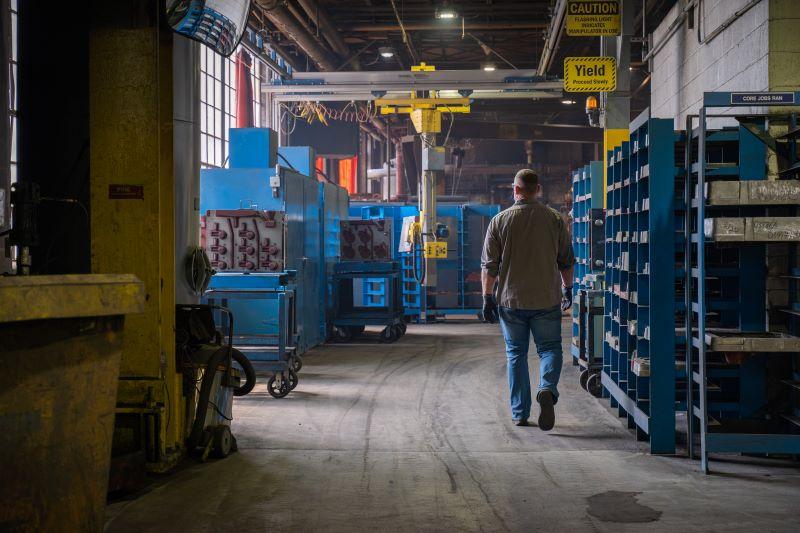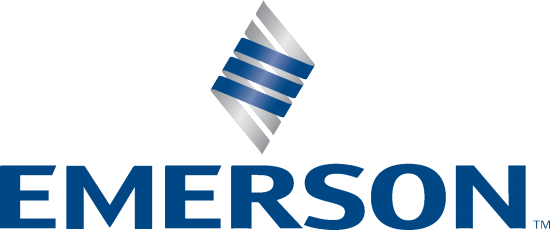Lead time is a reality of any production process, whether we are talking about the foundry industry or any other supplier niche in manufacturing. There necessarily must be time accounted for between when an order is placed and when an order is delivered, with internal factors relating to the production itself and external factors such as market and labor conditions both asserting an influence on that number.
Typical lead times for the production of a ductile iron casting range from 8 to 12 weeks. However, more recently ductile iron foundries like Urick have had to schedule orders 30 or more weeks out. Why the wait? Let's investigate.
Internal factors: Between the foundry and the customer
How complicated is the casting?
It's a given that a more complicated casting will require a longer lead time than a simpler one. A casting might be more complex because of its size, shape, or the need for one or more cores to create hollow cavities within the finished part. Each of those factors adds to both the design and quality control processes, adding to the lead time.
How many castings need to be produced?
Basic math here. Making more castings takes more time, especially when the casting is complicated.
What is the capacity of the foundry?
Another critical factor in calculating the lead time of a ductile iron casting is the capacity of the foundry overall (does it have the right equipment and capabilities in general) and its capacity at the time of the request. What is the foundry's production schedule and where could that request realistically fit into the queue to maximize quality and efficiency? For example, if the foundry has a similar job on tap in the future, it may slot your job behind it to take advantage of a more optimized setup.
How much testing and adjustment will the casting require?
Depending on the customer and the safety and quality assurance requirements of their industry, a part may be subject to more stringent testing, and in turn more fine adjustments to the mold pattern. The casting supplier and customer will need to work in close concert to ensure the casting conforms to the original engineering CAD drawing as accurately as possible, while not failing under stress.
Does the casting require value-added services?
Value-added services such as heat treatment, machining, and painting all contribute to production lead times. If these services are outsourced, then we must account for those providers' operating and capacity loads as well, in addition to the availability and expediency of the associated transportation. If the foundry has partnerships with providers of these services (as Urick does for treatments such as austempering), fewer delays will be suffered.
Does a relationship between the foundry and customer already exist?
A pre-existing relationship between a foundry and a customer can sometimes make a substantial difference in negotiating lead times. One way Urick facilitates faster turnarounds is our maintenance of lifetime patterns for our customers. This allows us to put that part back into production much more efficiently and potentially capitalize on smaller openings in our schedule.
External factors: Market demand and labor availability
Demand for ductile iron castings
Try as we might, there are certain external factors that we just can't control. When the foundry industry as a whole is being bombarded with orders, established companies such as Urick are sure to bear that load as well.
According to Foundry Management & Technology's 2021 Metalcasting Outlook, which surveyed foundry operators across the metalcasting industry, 59.05 percent of respondents were anticipating casting shipments to increase this year, with 29.52 percent expecting them to stay the same as 2020. Of those that expected increased tonnage, about half expected an increase of 10 to 25 percent, while approximately one-third anticipated an even greater uptick.
We have definitely seen that outlook come to fruition here at Urick, as our facility is booked into 2022.
Lack of foundry workers
Skilled labor shortages in manufacturing have been projected for decades, with the gradual withering away of apprenticeship programs and an overall shift in young people's career preferences to more white-collar professions. The ongoing pandemic has only exacerbated this problem, as it's been difficult to recover the foundry workers furloughed or lost during the shutdowns. With inadequate staffing, a foundry cannot efficiently operate its equipment and run its processes, further bloating production lead times.
Foundries across the industry have been testing and implementing strategies to attract and retain more foundry workers, including offering higher wages, flexible scheduling, bonuses for referrals and good attendance, and more. Urick strongly believes that it is our people that keep us going, and is always looking for motivated, dedicated individuals to add to our team for a potentially rewarding career.
Ductile iron castings from Urick: Worth the wait
Although we'd love to live in a manufacturing world of absolute certainty, the fact of the matter is that production lead times are often a moving target. How that number shakes out depends on you (giving plenty of advance notice, providing a draft model we can translate to a casting pattern easily), depends on us (the capacity of our ductile iron foundry), and depends on outside forces like labor and demand.
Whatever the case, we at Urick know that good things take time — and when they take more time than expected, you deserve to know about it. We greatly respect the value of transparency with our customers — because communication, trust, and quality are the pillars of any lasting customer-foundry relationship.



